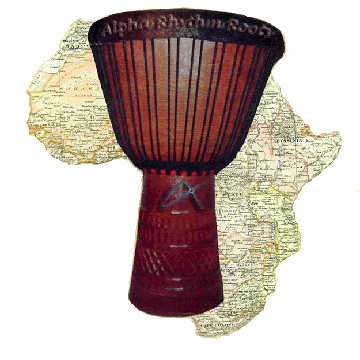Djembe tuning and care
- alpharhythmroots

- Jan 29, 2021
- 3 min read
Updated: Aug 21, 2024
Transferred from an older blog: Original post date by Alpha (Administrator) in 2003
Authentic Djembe drum care
A Djembe is to be played by hand only. Beware and remove sharp objects like watches, rings, or bracelets that would damage the Djembe skin while playing.
Djembes do not like extreme temperature change. Please do not leave your Djembe in the trunk of your car overnight - And do not leave it outside under direct sunlight for hours without playing it.
You absolutely need a Djembe bag when going outdoors in winter. If you don’t have one, use an old blanket that you can wrap around the head to minimize the temperature change on the Djembe head. A Djembe bag also prevents the Djembe head from being damaged by banging the head on edges of door frames..etc.. Regardless of the quality of the Djembe bag you have, it is a good idea to cut a round piece of thick cardboard and place it between the Djembe head and the bag head cover as an extra barrier.
Please remember that your Djembe doesn’t like the rain. If you play outdoors and your Djembe head gets wet, the sound of that head will be permanently modified.
You will then have to change the skin to get your original sound back.
If you know you will not be drumming for months, do not leave your Djembe fully pulled. Furthermore, playing regularly is an integral part of taking care of your Djembe head, as the natural oil on the palm of your hands will help to keep the Djembe skin pliable. So play regularly! However, do not put anything on your Djembe head (no weight / no lotion / nothing...).
When frequently drumming, it is recommended to use pure Shea butter (Eucarite) on the palm of your hands to protect them. Make sure you don’t put it on right before playing, as the Djembe skin will absorb it while playing, and become too greasy over time, permanently modifying the sharpness of the notes you play.
No care is required on the wood of an Authentic Djembe.
The Djembe head is like the strings of a guitar. Eventually, it will break and will have to be changed. This is a normal thing for a Djembe of any quality, similar to any other professional instrument. How long will you play before it happen depends on how well you will take care of your instrument and the initial quality of the instrument you purchased (see advice explained above in this text).
How often you play your Djembe is the other factor that will affect how long the head will last. 99% of the problems with authentic Djembe heads are due to misuse.
The most common mistake is to over pull the Djembe head to compensate for a lack of hand playing technique.
If you play your authentic Djembe once a week for a few hours, and follow the care tips included in this article, you could expect to enjoy a single Djembe head for many years..
On the other hand, if you are a professional musician playing over four hours a day, you might have to change the head much sooner.
...And don’t worry, regardless of what happens to your Djembe head, you can always have it re-skinned, and have a brand new Djembe with its original sound!
Authentic Djembe tunning
In the second part of this article, we will show you the most common Djembe tuning up technique. Djembe tuning is a simple thing to do with a professional well mounted quality authentic Djembe. The only thing you may need to do, is the easy final tuning steps explained below: Place the Djembe laying down on the floor and sit astride the Djembe foot before starting step#1. In step 6, you can wrap the rope edge around your hand, and even use a glove if the rope is too hard to pull with bare hands.
This is the most common Djembe tuning up technique, shown here, going to the left side
If you can barely see the skin going down while gently pressing in the middle of the head with 3 fingers, it's definitely time to stop tuning up. Watch the skin, and don't exceed its maximum resistance. Getting a sharp high slap is also a question of striking technique!
You can also tune down your Djembe to get a lower deeper sound, by simply doing the reverse process.
The same tuning technique can be applied to the Doundoun set of 3 drums.
Verticals tightening are a completely different operation that tuning, and is only done once (If authentic quality Djembe). It is performed by the craftsmen/seller, since it is part of the Djembe original mounting steps.














Comments